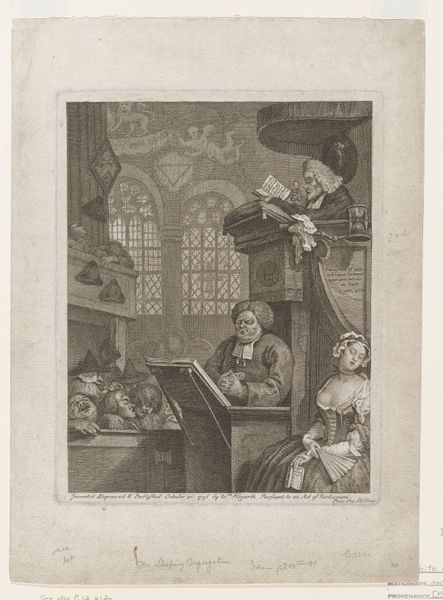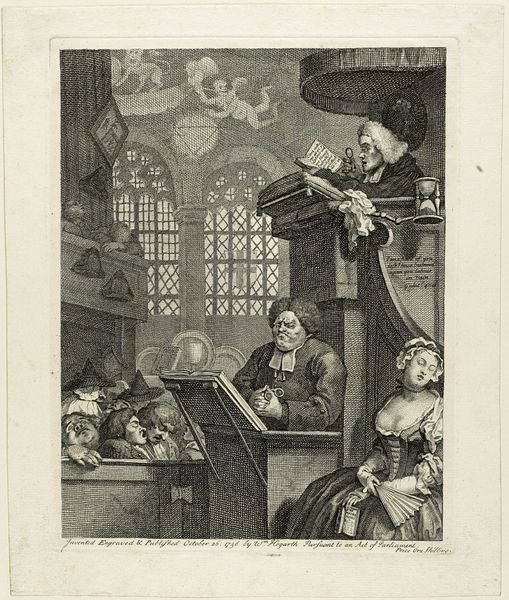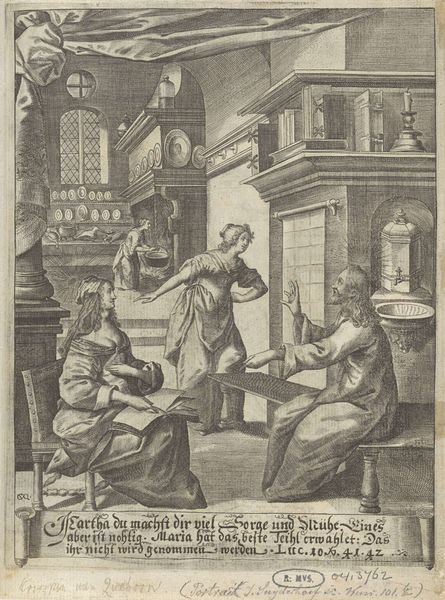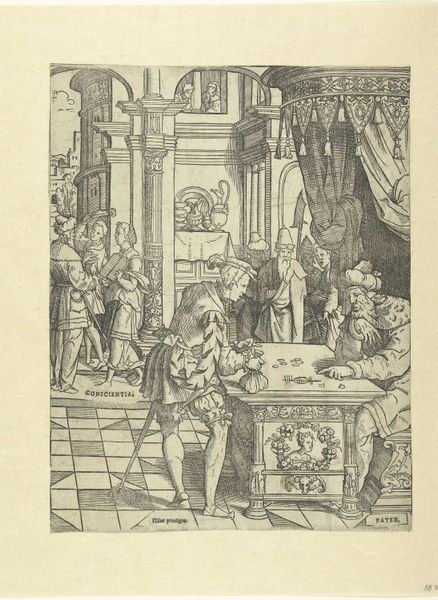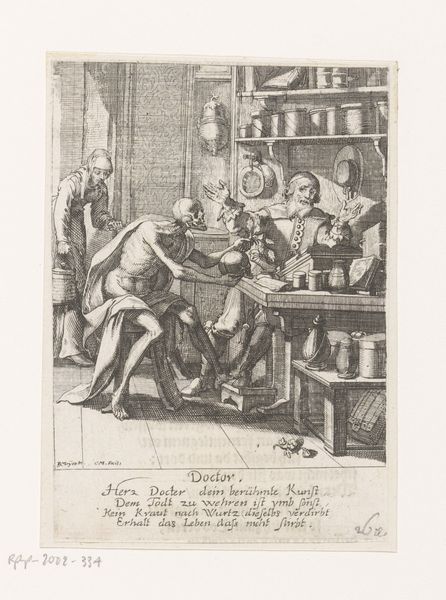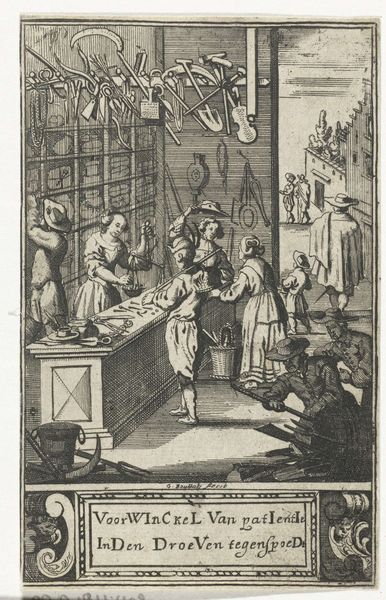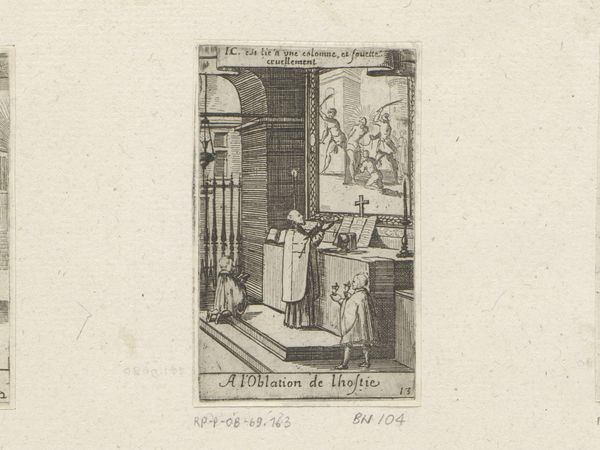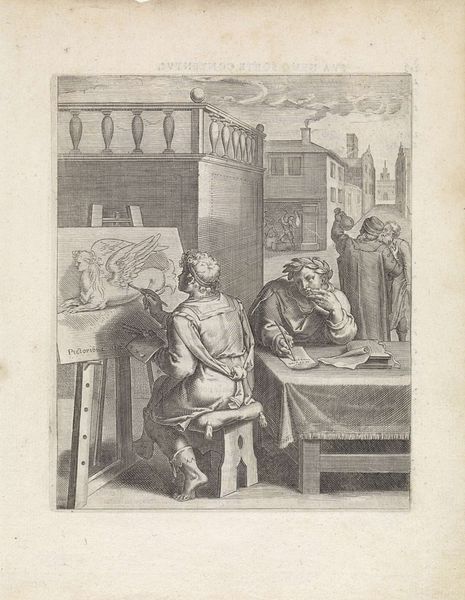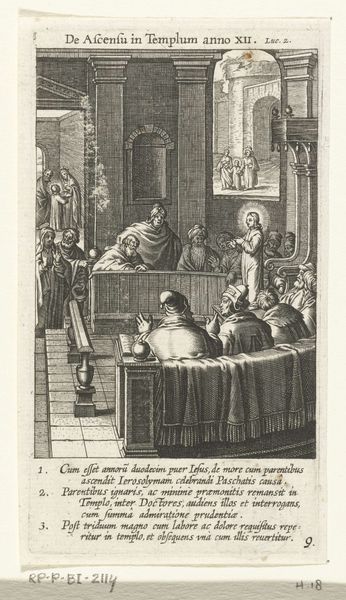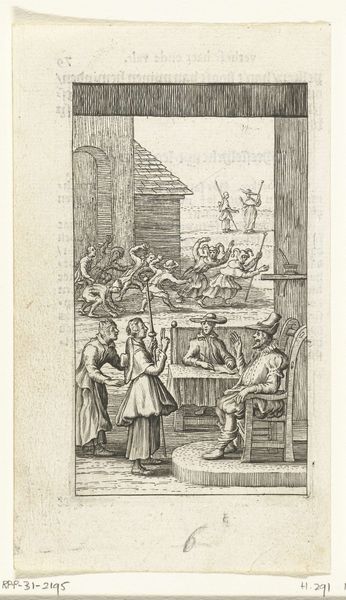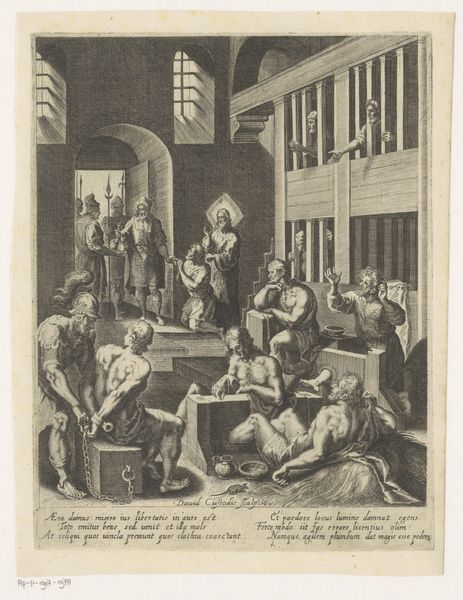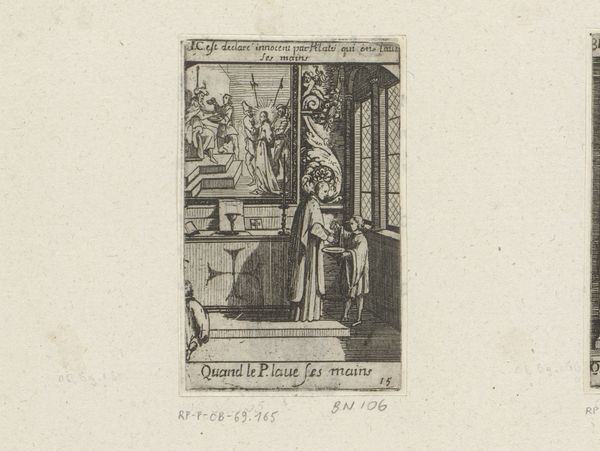
print, engraving
#
dutch-golden-age
# print
#
cityscape
#
genre-painting
#
history-painting
#
engraving
Dimensions: height 140 mm, width 84 mm
Copyright: Rijks Museum: Open Domain
Curator: What a delightfully cluttered composition! It almost spills out of the frame. Editor: This is Jan Caspar Philips' engraving, "Facade of a Secondhand Shop," created around 1734 or 1735. You can see it here at the Rijksmuseum. The details he renders are simply amazing! Look at the variety of objects! Curator: The materials and objects crammed into this space speak volumes. From the textiles and discarded tools to the tableware and children’s toys, the whole scene feels alive with the echoes of past utility and production. And the spinning wheel, front and center, practically invites an analysis of labor! Editor: Exactly! I find the perspective fascinating. Philips situates the viewer right in the midst of the action. We are positioned as a passerby, observing this transaction and the wider scene, engaging with the everyday lives of 18th-century Amsterdam and how people were interacting and working. Look at the backdrop: a very animated urban scenery is unrolling behind the pawn shop. Curator: What intrigues me is that sign. "Secondhand shop of the present world." Its material reality--the physical sign itself hung out to entice consumers--collapses into symbolic meaning. Who exactly is profiting, what items were sold, how it circulated--the print invites these thoughts about consumption. Editor: And consumption isn’t just material. Look how that sign visually dominates the composition; and how the archways in the background frame and hierarchize public and private space! Philips, as printmaker, engages critically with representation, with class, and with the visual codes of urban life in Amsterdam. Curator: It's easy to think about each item--pots, garments, books--and try to see where these originally come from. Perhaps thinking on a larger level it challenges ideas about luxury, social mobility and material necessity during that time. Editor: Absolutely. This seemingly simple street scene is dense with layers of historical meaning, highlighting the social structures and economic activities that shaped Amsterdam, while also giving space for analyzing labour practices of that time. It makes me appreciate how public images of Amsterdam become encoded over time. Curator: Yes, looking at this through a materialistic view definitely highlights aspects of value, utility and labour involved here! Editor: A perfect lens indeed.
Comments
No comments
Be the first to comment and join the conversation on the ultimate creative platform.
